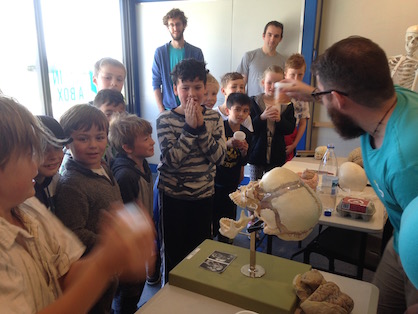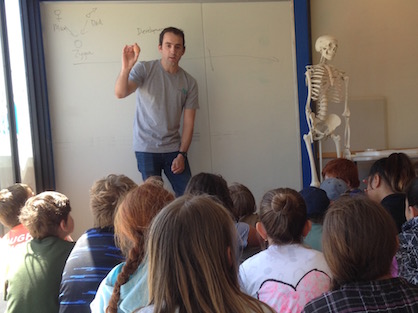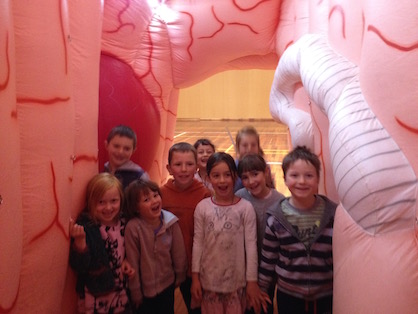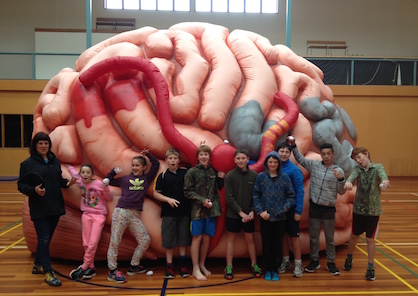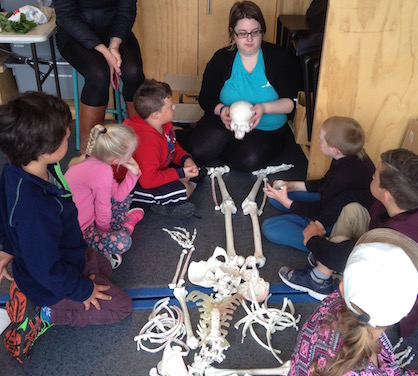
School children from around the lower South Island got hands-on with anatomy, conservation genetics and neuroscience activities thanks to the Department of Anatomy and Genetics Otago's Lab in a Box. The mobile science laboratory has been touring the South Island, and our staff caught up with it when it visited Te Anau, Gore, Stewart Island and Bluff.
Staff had a great time interacting with students from several primary and high schools during the educational sessions, which incorporated fun learning activities for the students. Feedback and photos suggest the students enjoyed the sessions just as much as our staff.
Dr Helen Taylor gave presentations on conservation genetics, explaining the issues of small, threatened populations, and what happens to genetic diversity when a population decreases dramatically. Students were urged to think about how they would design a sanctuary for threatened birds in New Zealand to maximise genetic diversity and avoid extinction. The children were also encouraged to take part in local bird surveys and share their results online.
Associate Professor Christine Jasoni and Masters student Will Stovall travelled to Stewart Island with the Brain Health Research Centre giant inflatable walk-through brain. Students learnt all about the structures and functions of the normal brain, and how brain trauma and disease can affect these functions.
Drs Rebecca Bird, Tim Hore, Brad Hurren, and Steph Woodley presented three programmes: Getting to know 'dem' bones, Skulls and brains, and How did I get here? Development in us and the chick. In 'dem bones, students learnt how many bones make up the human body, how they join together and function as a skeleton, and the importance of keeping their bones healthy through good eating and exercise. In the Skulls and brains session eggs inside plastic jars, brain models, and dissection of a sheep brain were used to illustrate the development of the brain, how the skull protects the brain, and why the skull is so important for brain health. Development in us and the chick illustrated the diversity of ways development and nutrition occurs in animals and humans in the womb, and students had fun looking at unfertilised and fertilised chicken eggs.
The Department plans to be involved in more outreach opportunities like these, enabling staff to take the science they love out into the community.